Hiking and camping are fun and educational, but not all greenery people encounter is especially friendly or welcoming. Some plants have certain characteristics that are not exactly compatible with human skin or human digestion. Let’s break down some plants to avoid on your next camping trip.
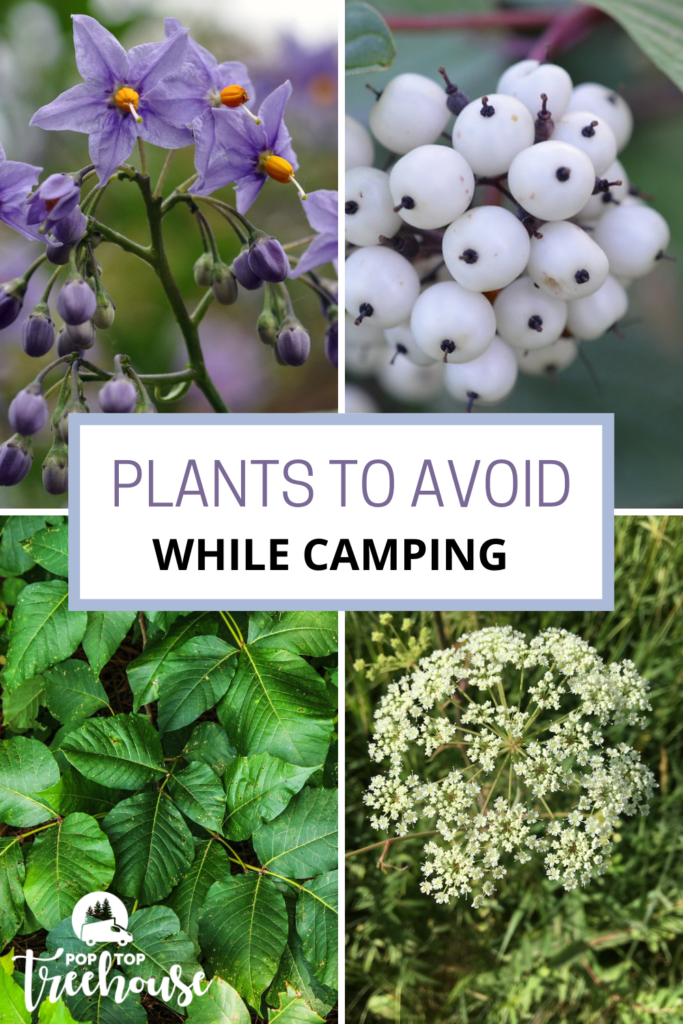
Know Before You Go
Before you head out camping, it’s a good idea to familiarize yourself with common plants to avoid in the area. This is especially helpful if you’re camping in a new state or province, or somewhere different geographically.
As a general rule, don’t eat anything you don’t know. Many edible plants also have poisonous plants that are very close in resemblance. You need to be completely certain something is safe to eat in the wild!
This also goes for pets. Watch any pets who like to go out munching and try to reign them in from eating any mysterious plants. If your dog goes off-leash, also be aware that their fur can collect oils from poisonous plants that can harm your skin if you pet your furry friend.
After a hike or any encounter with the bush, it’s a good idea to wash your hands thoroughly before eating or touching your face. This helps to avoid spreading any oils in the event that you have touched something unknowingly. Also change your clothes upon return and don’t wear them again until they’ve been washed.
Lastly, don’t burn any unknown plants. While many of us know not to burn anything found in the bush anyways, I want to encourage extra caution in burning stuff you don’t know. The smoke can be just as dangerous as the plants themselves!
Plants to Avoid While Camping
Plants with thorns, brambles, thistles, and nettles, with their small stinging hairs, can cause temporary pain, but there are other plants that produce conditions that are much longer-lasting and even dangerous.
When it comes to plants that are a problem, most people think of poison ivy, poison oak, and poison sumac. When people come in contact with the oil in these plants, called Urushiol, it produces a rash, blisters, and intense itching and irritation that can last for weeks.
If the oil comes in contact with the face, especially in or around the mouth or eyes, it will most likely require medical attention, and if the oil gets into the throat, it can lead to severe breathing problems.
Poison Ivy
You know the saying! Leaves of three, leave them be. Poison ivy is a woody vine that may be growing on trees, poles, stumps, and right alongside other vines. It has three leaves, and as the summer progresses, the leaves will begin to change from green to green tinged with red.
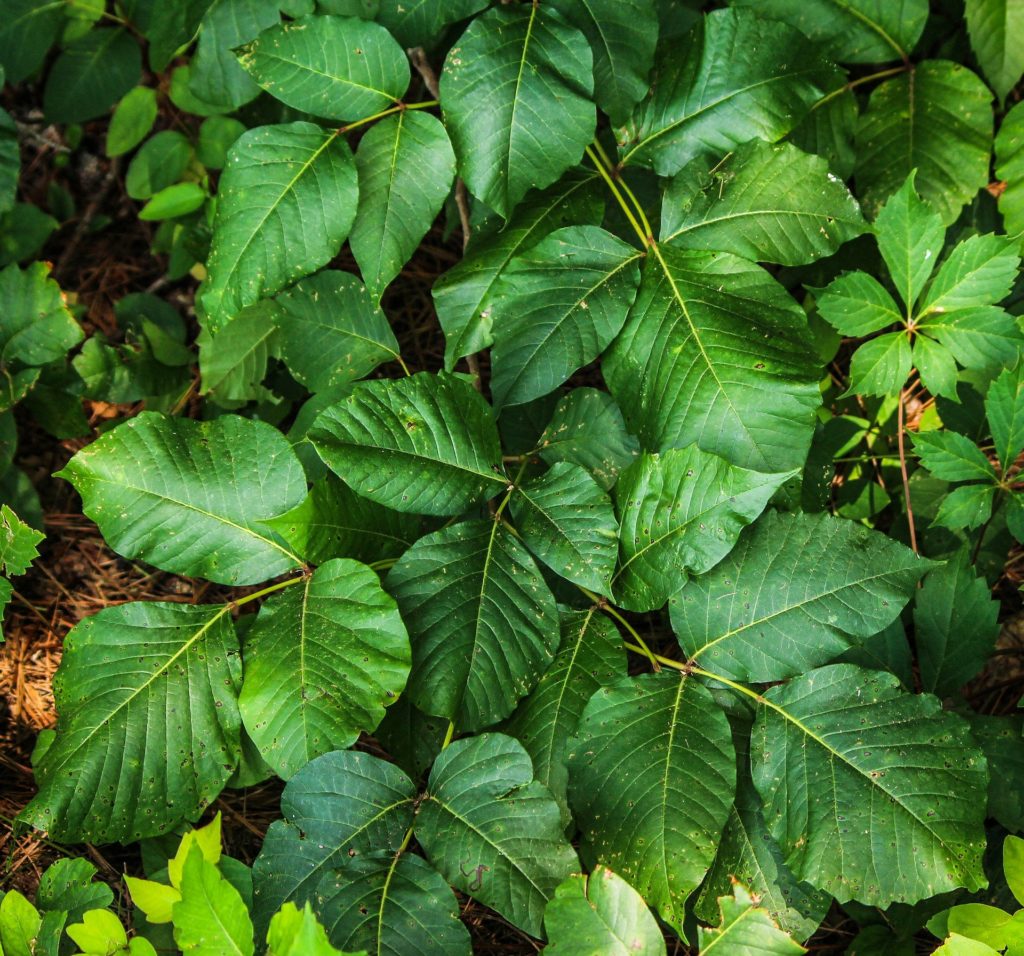
Poison Oak
Poison oak is a woody shrub that also has three leaves that change to red or yellow in the fall. Not to be confused with oak trees, the name comes from the leaves resemblance to the trees’ leaves. Poison oak leaves have hair on either side and are duller in colour compared to poison ivy.
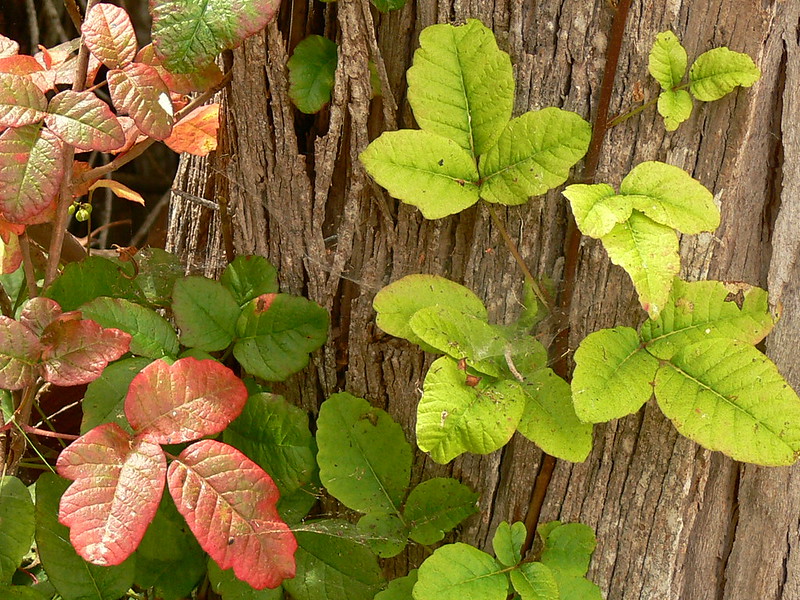
Poison Sumac
A tree, poison sumac can be found in the eastern and southern states and southeastern Canada. It likes swampy and wet areas and can be identified by its white or light green berries, red stems, and smooth leaves. Most people are more sensitive to poison sumac than poison oak and ivy.
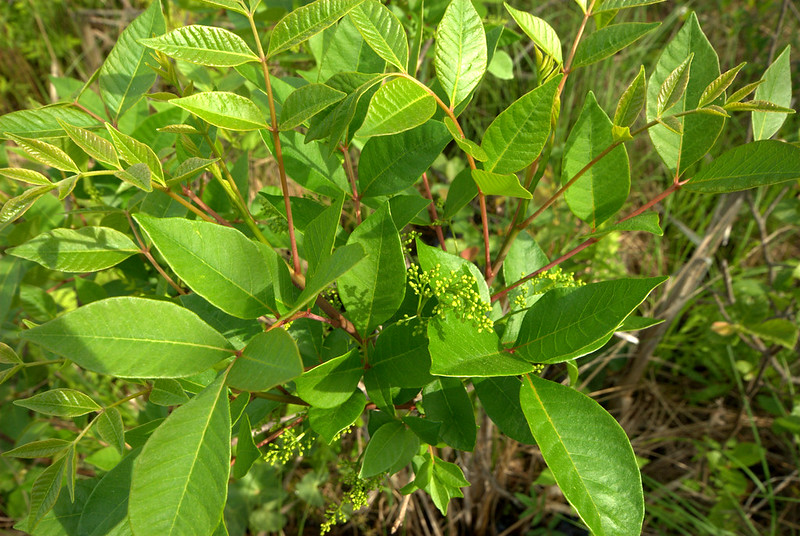
Stinging Nettle
Stinging is right! The little hairs on leaves, stems, and flowers of stinging nettle prick and irritate the skin. They grow in clusters up to 8 feet high, with heart-shaped, pointed leaves ranging from 2-5 inches. You can find stinging nettle Canada-wide in woodland and riverside areas.
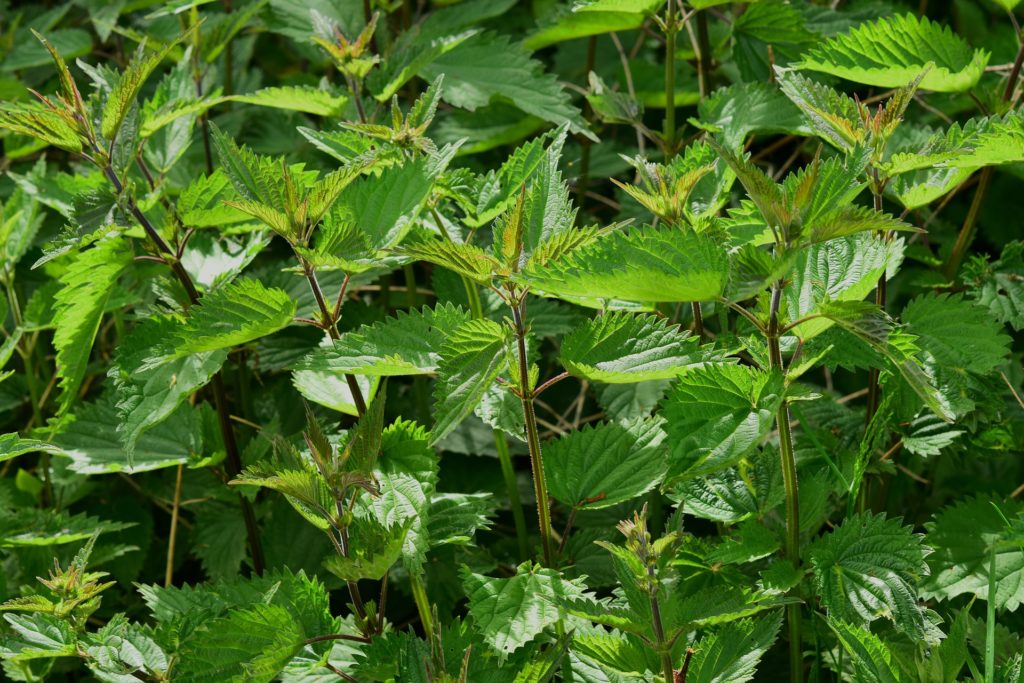
Water Hemlock
Found in wet soil, water hemlock is often confused with Queen Anne’s lace and yarrow. It can be identified as white clusters of flowers forming an umbrella-like shape and has hairless stems. External exposure to the sap can be irritating, but it is even more dangerous to ingest it.
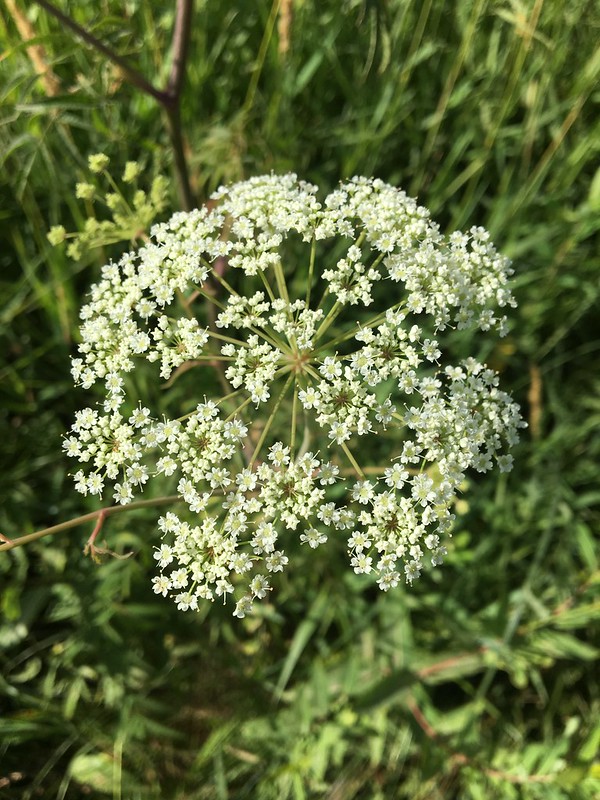
Wild Parsnip
If you come in contact with wild parsnip, you may not notice it at first, but the sap makes your skin more sensitive to the sun’s rays. You can get a bad rash after a few short minutes in the sun. A member of the parsley family, it has yellow flowers forming an umbrella-like cluster.
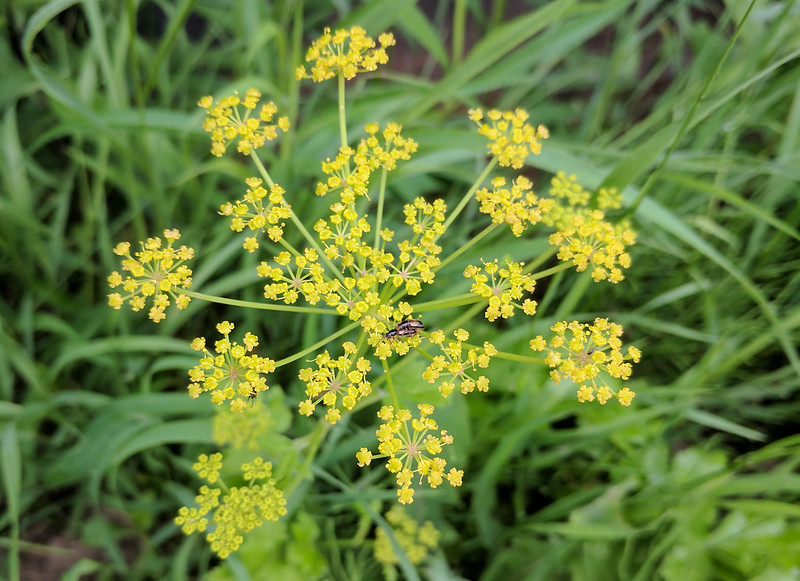
Berries
Hopefully, most adults should know that not all plants and berries in the wild can be eaten. However, some of these poisonous plants look entirely harmless and may tempt young children.
Moonseed berries, white baneberry, elderberry (poisonous unless cooked), holly berries, hemlock berries, mistletoe, and many more are all poisonous. While most berries look tasty, avoid eating them unless you’re 100% certain they are okay to consume.
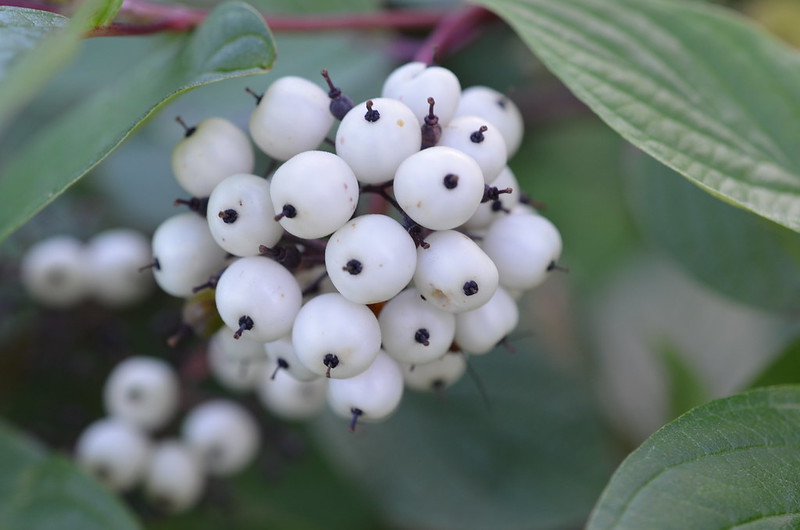
Flowers
Children should be instructed as to what can and cannot be consumed and warned not to touch or eat any plant without permission. For example, buttercups can be attractive, but they can damage the digestive system.
Other flowers to avoid include nightshade, foxglove, yellow lady’s slipper, and bloodroot. Of course, there are a ton more. Overall, leave wildflowers alone and enjoy their pretty petals without touching.
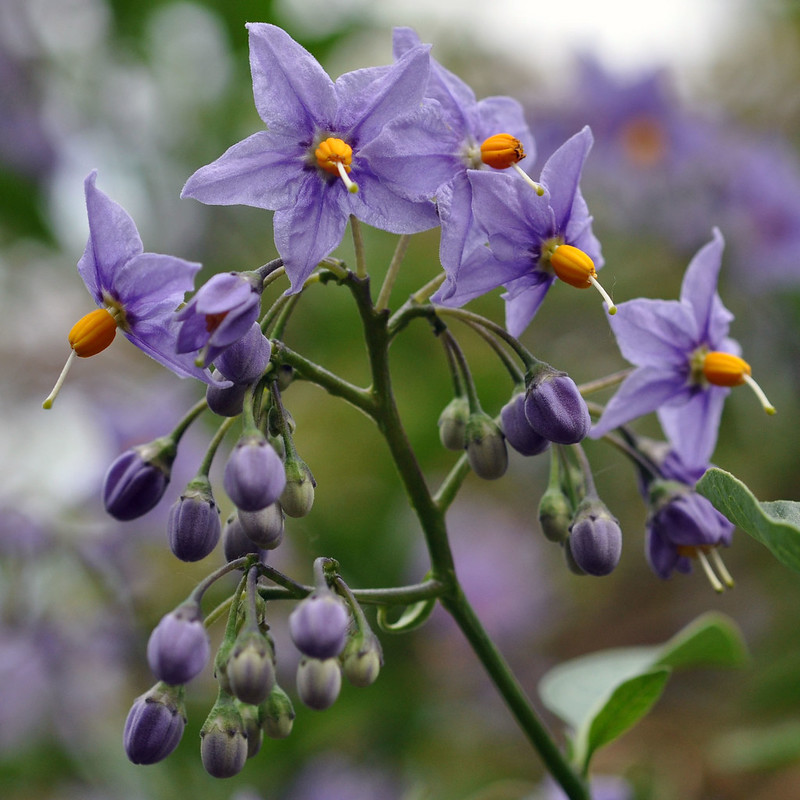
What to Do if You Come in Contact?
If contact is made with any of the stems or leaves of these plants, the area should be washed immediately with soap and water, and if possible, rinsed with hydrogen peroxide.
If the rash has already started to develop, it should be kept well coated with Calamine lotion, sprayed with Benadryl, or treated with some other anti-itch cream. And, of course, if the condition is severe or near eyes or mouth, a doctor should be consulted.
Before taking off on a camping or hiking trip, it is always a good idea to familiarize everyone in the family with dangerous plants. Taking the time to learn what plants to avoid, their appearance, and where they might be found is much better than allowing them to ruin a day in the great outdoors. Be safe and happy camping!
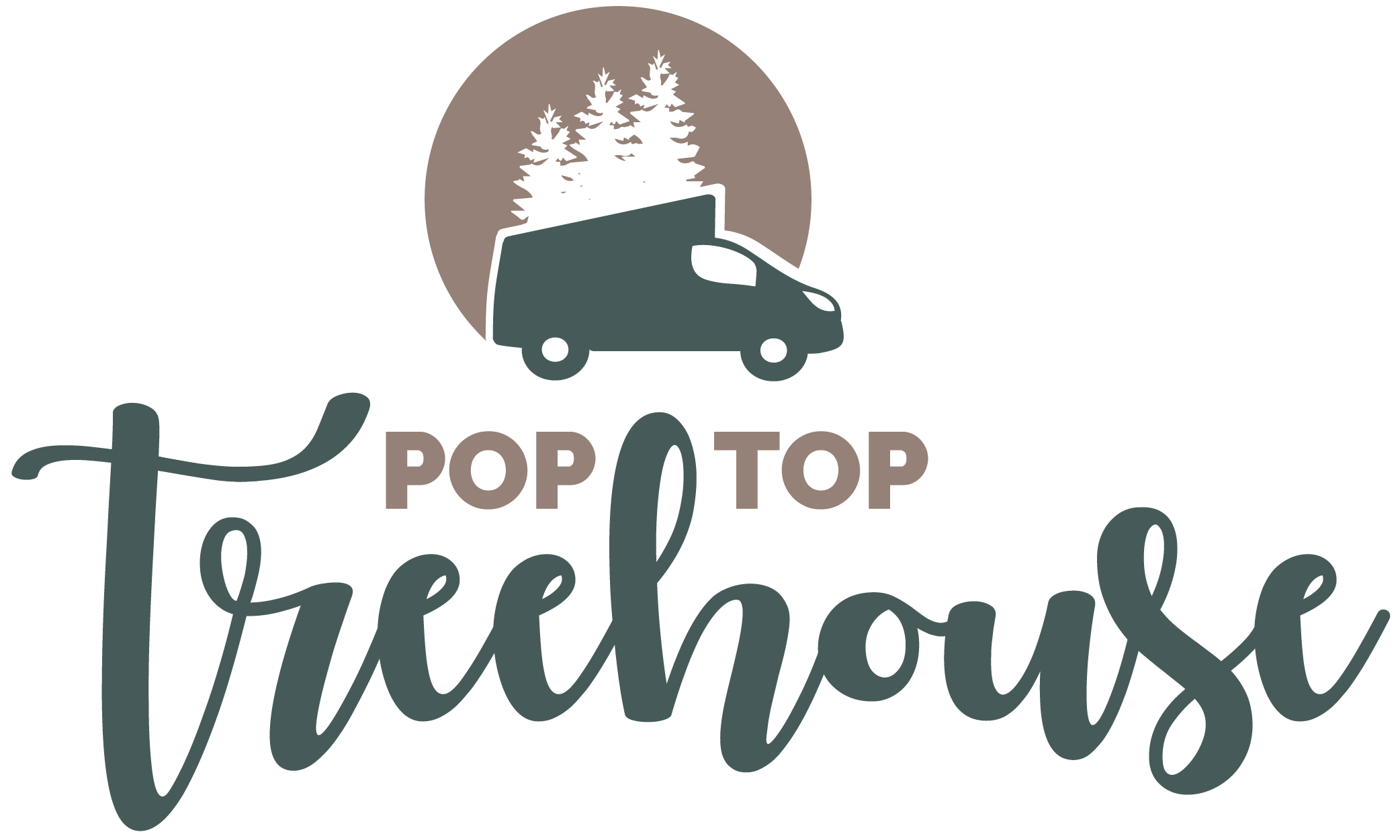
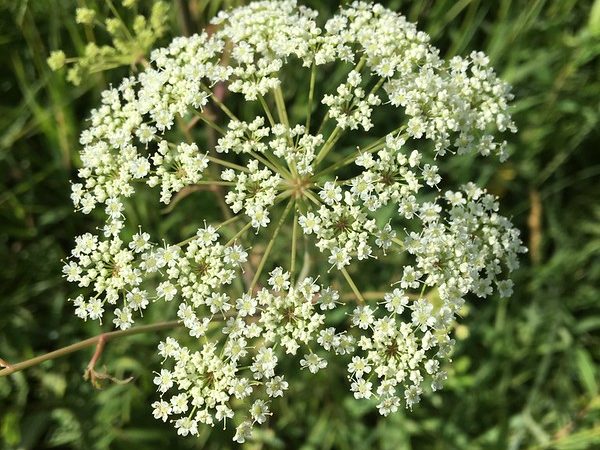
 How to Waterproof a Tent
How to Waterproof a Tent
